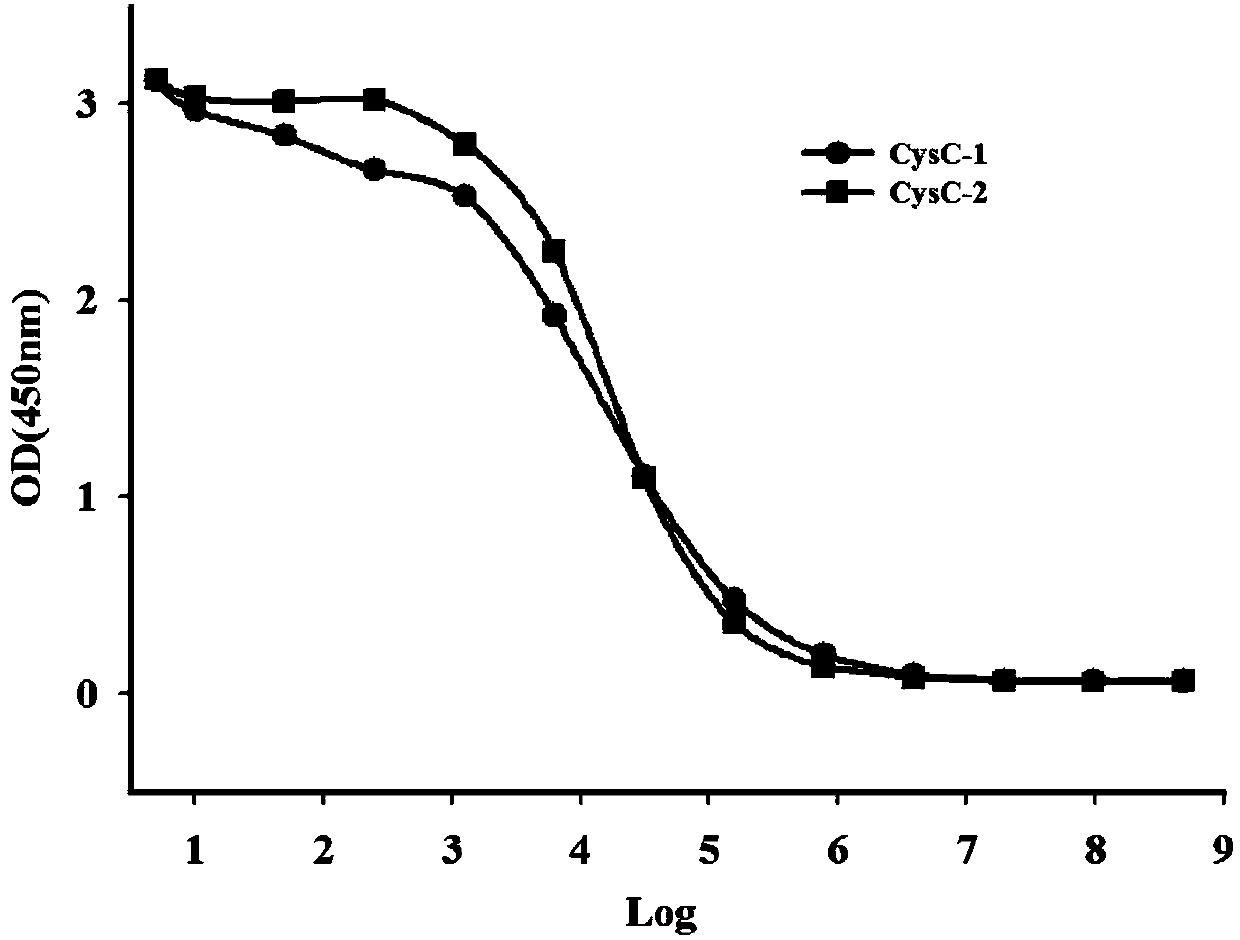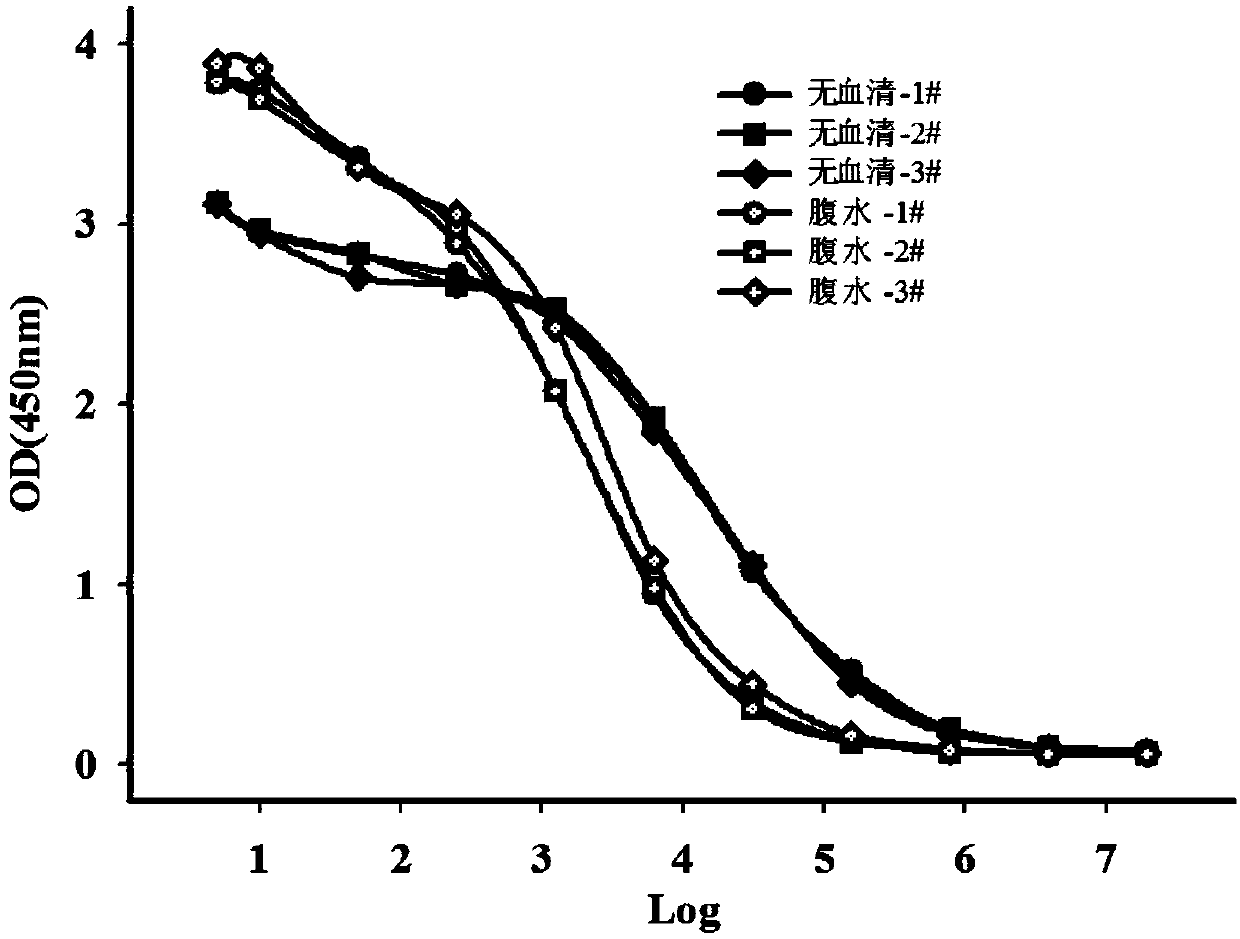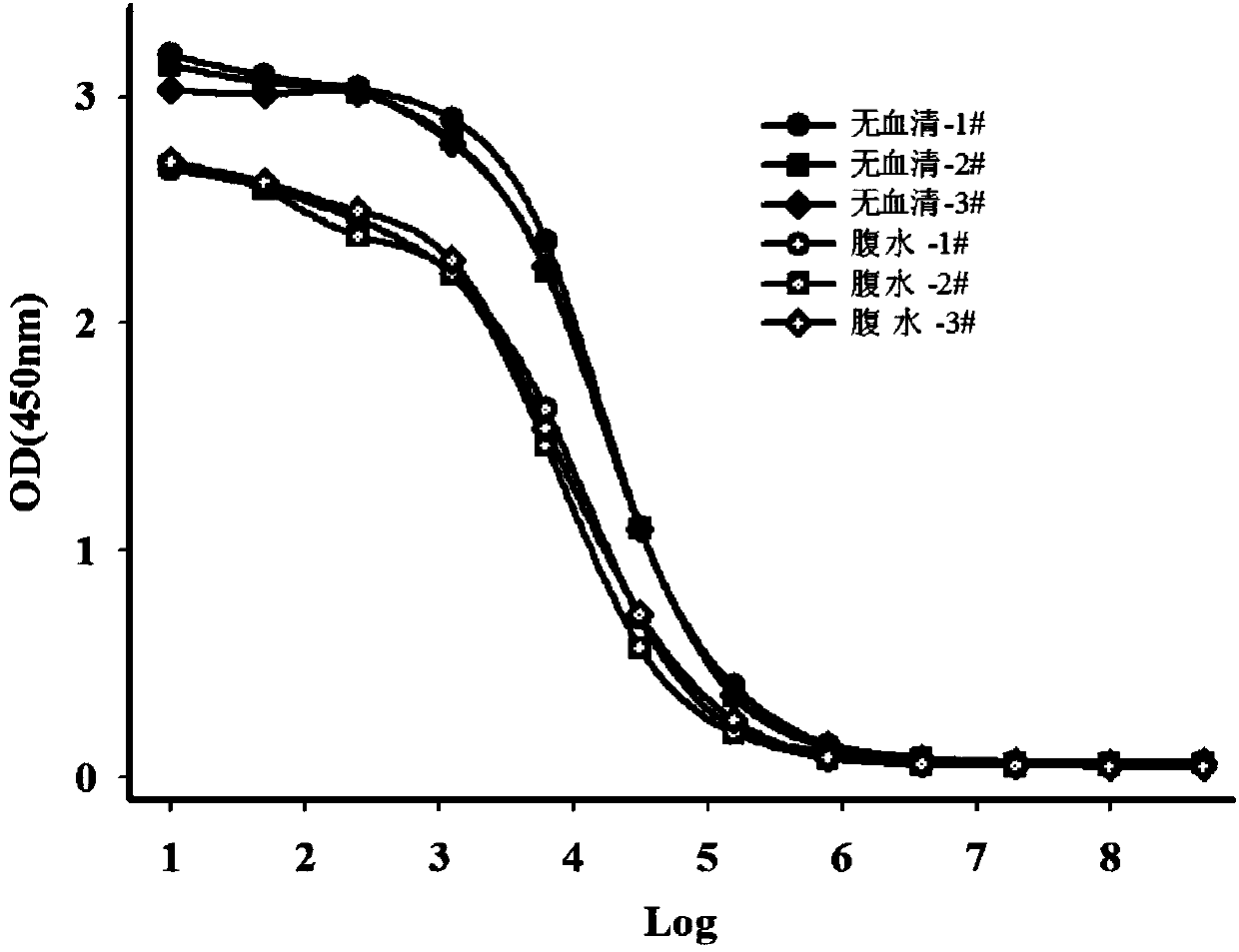Hybridoma cells capable of secreting mouse anti cystatin C monoclonal antibodies, secreted monoclonal antibodies and use of monoclonal antibodies
A hybridoma cell and monoclonal antibody technology, applied in the field of monoclonal antibodies, can solve the problems of low domestication success rate, easy loss of cell chromosomes, lengthy domestication process, etc., and achieve high sensitivity, cost reduction, and high purity.
- Summary
- Abstract
- Description
- Claims
- Application Information
AI Technical Summary
Problems solved by technology
Method used
Image
Examples
Embodiment 1
[0027] Preparation and Screening of Embodiment 1 Hybridoma Cell Line
[0028] (1) Immunization of mice with CysC antigen
[0029] Dilute the recombinant human CysC antigen (Sichuan Maike Bio-New Material Technology Co., Ltd.) to 2.0 mg / ml with normal saline, mix it with Freund's complete adjuvant (Sigma, product number SLBF-9338V) in equal volume, and emulsify it into oil with a 1ml syringe Emulsion, until the oily emulsion dropped into water does not disperse before stopping the emulsification. The emulsion was subcutaneously administered to BALB / c mice (Chengdu Dashuo Experimental Animal Center, 6-week-old female, 2 mice) at a dose of 100ul / mouse. Immunization was boosted 14 days after the first immunization, and the antigen was mixed with an equal volume of Freund’s incomplete adjuvant (Sigma Company, product number SLBM9367V) and then emulsified. The tail blood was collected, the serum was separated, and the titer was determined by indirect ELISA. After 5 times of immun...
Embodiment 2
[0041] The preparation of embodiment 2 monoclonal antibody
[0042] (1) Recovery and subculture of hybridoma cells that can secrete mouse anti-CysC monoclonal antibody
[0043] In a clean bench, take 10ml of complete 1640 medium to 25cm 2 In disposable cell flasks, at 37°C, 5% CO 2 Incubate for 30 min in the cell culture incubator. Take out the hybridoma cell line CysC-1 and the hybridoma cell line CysC-2 of the mouse anti-CysC monoclonal antibody from the liquid nitrogen tank, immediately put them into a water bath at 37°C, and centrifuge at 1000rpm for 5 minutes after melting , Discard the supernatant, resuspend the pelleted cells with 5ml of preheated complete 1640 medium, transfer to a cell bottle, and place at 37°C, 5% CO 2 cultured in a cell culture incubator. After the first resuscitation culture overnight, observe the color change of the culture medium and the growth of the cells in the bottle. If the cell growth exceeds 70% of the bottom area of the cell bottle ...
Embodiment 3
[0046] Example 3 Potency Detection
[0047] (1) Titer detection of hybridoma cell culture supernatant
[0048] Dilute the recombinant human CysC antigen (Sichuan Mike Bio-New Material Technology Co., Ltd.) with 0.06M pH9.6 carbonic acid buffer solution to 2.5ug / ml, and coat 100 μl per well in a 96-well microtiter plate. Place in the refrigerator at 2-8°C overnight, discard the liquid in the well the next day, wash the ELISA plate washing machine three times, pat dry, use 0.01M PBS with pH7.2 containing 10% calf serum, 150ul / well, 37°C Block the liquid for 2 hours, discard the liquid, and pat dry to detect the titer of hybridoma cell culture supernatant, serum-free culture supernatant, and purified antibody titer. Hybridoma cell culture supernatant titer detection The first well is the original supernatant culture solution, from the second well to the fourth well, it is diluted 10 times with 0.01MpH7.2 PBS buffer, the fourth well to the tenth well 2-fold serial dilutions. In...
PUM
 Login to View More
Login to View More Abstract
Description
Claims
Application Information
 Login to View More
Login to View More - R&D
- Intellectual Property
- Life Sciences
- Materials
- Tech Scout
- Unparalleled Data Quality
- Higher Quality Content
- 60% Fewer Hallucinations
Browse by: Latest US Patents, China's latest patents, Technical Efficacy Thesaurus, Application Domain, Technology Topic, Popular Technical Reports.
© 2025 PatSnap. All rights reserved.Legal|Privacy policy|Modern Slavery Act Transparency Statement|Sitemap|About US| Contact US: help@patsnap.com



